Archive of articles posted to the website.
 The high cost of health insurance is one of the biggest considerations when making the retire-now or retire-in-the-future decision. I personally have been battling retiree health insurance costs for over 20 years, and I’ve learned two things: There is no one-size-fits-all option, and there is no permanent option. Every year, I consider my family’s needs and look at the available options. Then, I make the best decision for that year. The great news is that the options continue to expand, and some retirees receive no-cost or very low-cost quality health insurance.
The high cost of health insurance is one of the biggest considerations when making the retire-now or retire-in-the-future decision. I personally have been battling retiree health insurance costs for over 20 years, and I’ve learned two things: There is no one-size-fits-all option, and there is no permanent option. Every year, I consider my family’s needs and look at the available options. Then, I make the best decision for that year. The great news is that the options continue to expand, and some retirees receive no-cost or very low-cost quality health insurance.
Did I just grab your attention? I hope so. Every year I talk to people who have wanted to retire but haven’t because of the health insurance premium horror stories. Let me explain how I recommend controlling health care costs so you can make an informed, realistic decision.
 First, prior to retirement, I usually recommend one enroll in the COP Blue Cross Blue Shield Saver’s Choice plan. My reasoning is this plan has significantly lower COBRA premium costs ($438 a month per individual), and remaining on COBRA through the year of retirement to take advantage of any deductibles spent makes sense. Then, during the annual open enrollment period, we get busy selecting and evaluating our options for the following year, armed with an accurate estimate of that year’s income.
First, prior to retirement, I usually recommend one enroll in the COP Blue Cross Blue Shield Saver’s Choice plan. My reasoning is this plan has significantly lower COBRA premium costs ($438 a month per individual), and remaining on COBRA through the year of retirement to take advantage of any deductibles spent makes sense. Then, during the annual open enrollment period, we get busy selecting and evaluating our options for the following year, armed with an accurate estimate of that year’s income.
We usually dismiss the COP and PSPRS health insurance options, as both are very expensive for the benefits offered except in unusual circumstances. Both options can have monthly premiums exceeding $1,000 a month per person. This year, we were fortunate to offer an additional option through the Thin Blue Line Benefits. This plan just became available in September 2022 and has lower premiums ($725 for individual and $1,280 for retiree and spouse) than the COP or PSPRS options. The plan includes a large national provider network and affordable co-pays and out-of-pocket limits. All the above options qualify a retiree for their full COP MERP benefit ($168 or $202 a month) and up to $260 premium benefit subsidy through PSPRS.
Now, consider the following: The average pension is approximately $75,000 a year. Under the Affordable Care Act, with the updated American Rescue Plan legislation, an individual enrolling in a health insurance plan through the federal marketplace will not pay more than 8.5% of their income toward health insurance. In the case of a $75,000-a-year pension, this amounts to paying no more than $6,375 a year for health insurance, regardless of how many individuals are enrolled. To determine the federal tax credit applied toward the plan premiums, one takes the difference between the 8.5% income threshold and the plan premium. The plan premium is determined by age and the second-lowest-cost silver level plan in a given county, regardless of the actual plan eventually selected for enrollment (usually a bronze-level plan).
This is how some individuals end up with a no-cost health insurance plan. Because plan premiums are based on age, older individuals receive a greater tax credit than younger retirees.
Using a real-life example, let’s assume my wife and I are each 58 years old. Together, our annual “pre-tax” income is $100,000, and we live in Maricopa County. Under this scenario, the federal government will pay directly to the health insurance carrier $742 a month for our insurance. In 2023, we have 137 plans from eight carriers from which to choose. I usually select one of the lower-cost options for many reasons, and in this case, an option from United Healthcare would have a monthly premium of $413 a month. That’s for both of us!
In the next example, let’s look at a 63-year-old single retiree with a $60,000 retirement. Under this scenario, the individual is eligible for a $416 federal tax credit to help pay for their federal marketplace insurance. This allows the individual to select the same plan as above. However, their costs would be $254 a month.
Under the Affordable Care Act rules, an individual is not permitted to receive their MERP or premium benefit subsidy to help pay for their federal marketplace plan premiums. Both of these benefits are not reported to the IRS, however, to be on the safe side, I suggest using the MERP to pay for dental and other non-covered health care costs and the premium benefit subsidy for supplemental insurance to help cover the actual out-of-pocket costs for the higher deductibles while enrolled in these plans. Allocating the $260 premium benefit subsidy toward critical illness insurance (cancer, heart attack, stroke, etc.) and an accident plan will provide additional financial protections to help pay for the higher out-of-pocket health care costs, with the subsidy reimbursing retirees for the supplement premiums. These products are similar to AFLAC, however, I prefer a United Healthcare-equivalent product that has a much better value with increased benefits for the money.
 There is absolutely no cost for you to work with a broker such as myself to assist you with your health care decisions, and the premiums remain the same whether you enroll yourself or through a broker. Just make sure the individual is well-versed in how all of your COP benefits work, the paperwork required to legally obtain your premium benefit subsidy and how to help narrow down and select the appropriate health insurance plan based on your needs.
There is absolutely no cost for you to work with a broker such as myself to assist you with your health care decisions, and the premiums remain the same whether you enroll yourself or through a broker. Just make sure the individual is well-versed in how all of your COP benefits work, the paperwork required to legally obtain your premium benefit subsidy and how to help narrow down and select the appropriate health insurance plan based on your needs.
The decision to retire requires consideration of many factors, but remember, there are strategies you can use to minimize your health care costs. Maybe that is enough to tilt the decision one way or the other?
For more information about retiree health insurance options, scan the QR code above or visit tinyurl.com/2wwd6wr3.
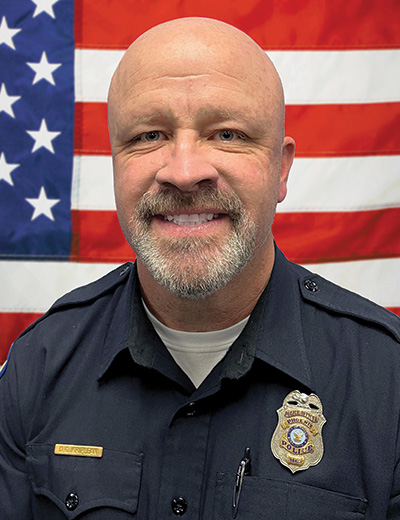
President
dkriplean@azplea.com
In a profession like ours, it seems there are certain things that do not need to be said. There are certain expectations of conduct that should be displayed, regardless of whether we are on or off duty. It seems lately there have been numerous examples nationwide of police officers conducting themselves in a way that brings discredit to our profession and us as individual officers. Phoenix is no exception. In recent months, patterns of conduct have emerged that have led me to question some people’s motivations on becoming a police officer.
Throughout my career, instances of police misconduct have surfaced. We are a profession of human beings interacting with other human beings. Every profession, ours included, contains a small percentage of folks who enter their careers with less-than-honorable intentions. I like to believe that with the extensive hiring practices we have in place, our profession has less opportunity to have certain folks successfully complete the hiring process and begin working among us.
I would encourage all of us to remember why we became police officers and to hold ourselves to a standard of conduct, on and off duty.
The problem is when someone with whom we work commits acts of serious misconduct, especially allegations that rise to the level of violations of moral turpitude, it becomes the lead story and front-page news. The public does not expect the police officers who serve their communities to be capable of such depravity. When these cases come to light, we are all painted with the same broad brush. As much as I despise that, I can understand it. Lately, it seems that we are constantly playing defense because another example of serious misconduct arises.
Police departments nationwide are struggling to hire and retain officers. The pool of candidates seems to be dwindling. The unfortunate consequence to this is having to lower the standards to the baseline of what the certifying agencies set (in our case, AZPOST). When I was hired, the standards of the Phoenix Police Department were much higher than those set by the Arizona Law Enforcement Officer Advisory Council (ALEOAC), now AZPOST. Phoenix P.D. prided itself on having set higher standards, which in turn led to only the most qualified applicants being hired. I believe we, as an organization, still hire only the most qualified to serve as Phoenix police officers. What is becoming more regular is the ability for some of these candidates to conceal their checkered, sketchy behavior. The obvious background investigations cannot determine what is actually in a person’s heart.
Moving forward, I am concerned that the goal of hiring the most qualified is giving way to the goal of hiring a set number. When you set your sights on a number, sometimes the quality is compromised. As in most scenarios, quality trumps quantity every time. Eliminating some of the more basic testing processes does not help with the quality column. I would encourage not only our Department, but departments from around the country, to get back on track with the full range of testing processes so that we can continue to hire the most qualified to reduce the instances of being painted with a broad brush.
I would encourage all of us to remember why we became police officers and to hold ourselves to a standard of conduct, on and off duty, so we don’t become the reason an entire profession is painted with a broad brush. Constantly guard your words and actions.
As always, if you have any questions, I can be contacted at the PLEA office or at dkriplean@azplea.com.
Officer Austin Peru and His Loved Ones Reflect on Shooting Incident One Year Later
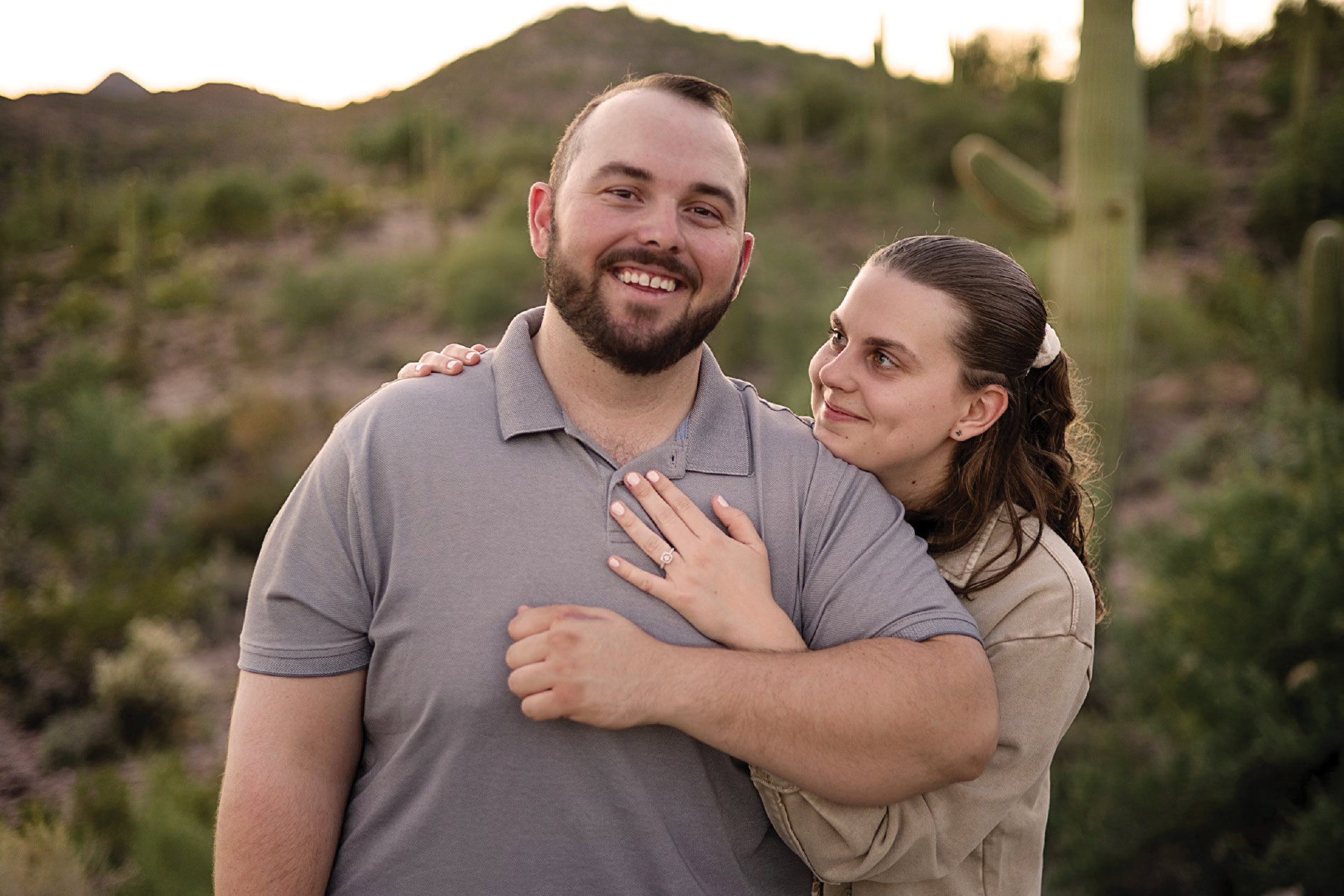
By John Maxwell
The events of February 11, 2022, left four officers shot and three other officers wounded by shrapnel. I was able to meet with Officer Austin Peru (10851 833J) and those closest to him — his fiancée, Brooke; his mother, Melinda; and his father, Rudy — to talk about the day that changed all of their lives. Everyone is so thankful that he is still here with us!
Austin’s Account
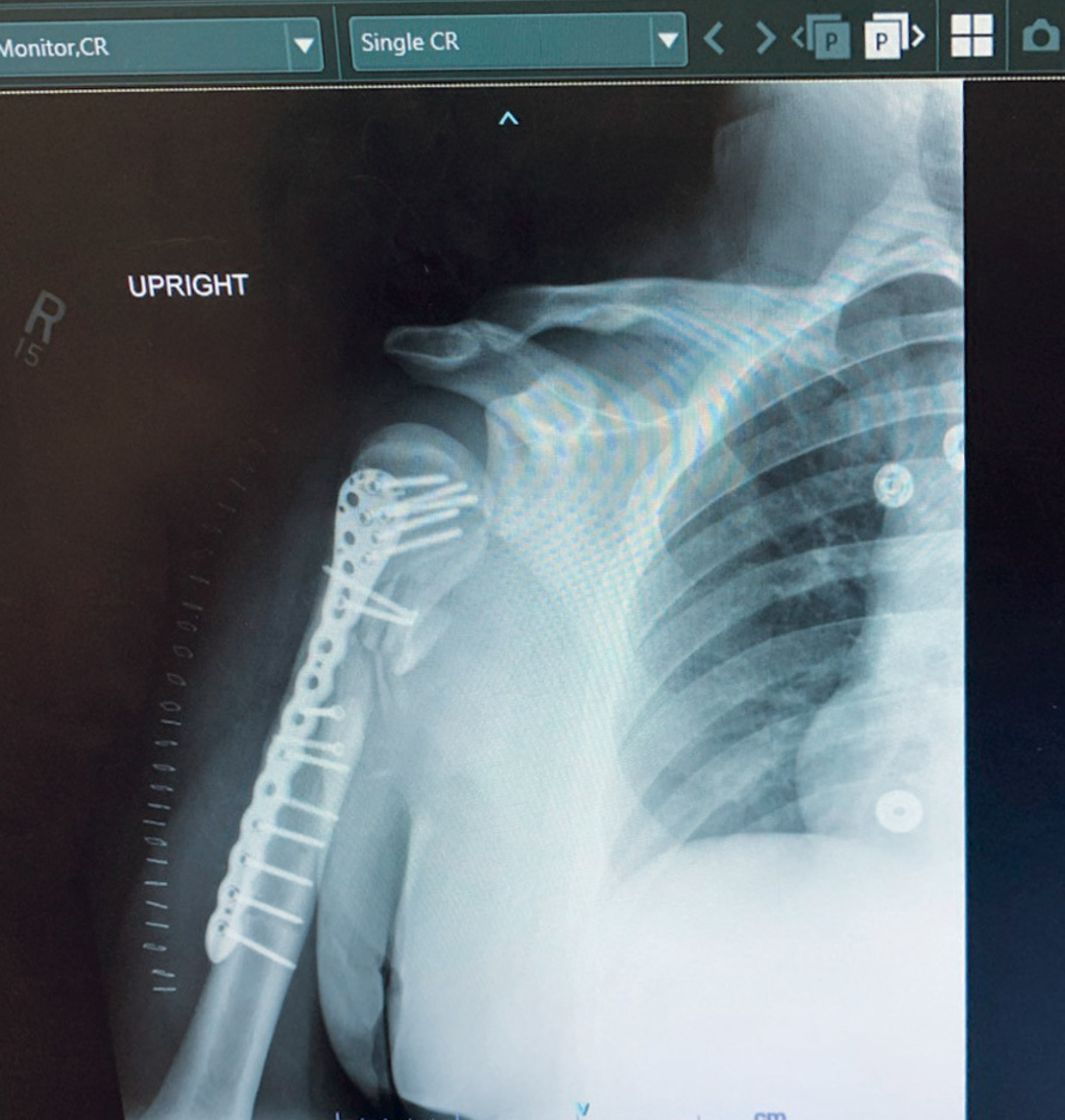
Austin recalls that he was spending time with his family before work. He talked to Brooke on the telephone before starting his shift. The shift started like any other day, clearing radio calls for service off the stack. He received an emergency radio call of a 211H (Home Invasion)/901G (Person Shot) at 5405 W. Warner St. Details of the call stated that three male suspects, all wearing masks, entered the home and shot someone inside. Information was that all the suspects had left the scene. Austin was close by the call and arrived on scene near S. 54th Ave. and W. Elwood St. at around 2 a.m. He parked across the street from the call address and could see a Black male standing by the front entry door. Austin did not gain any further information about the call as he approached the scene. The male told him, “She is bleeding out.” Austin knew that he was not going in the home alone and took it slow. He walked up and stood by a pillar near the front of the house. He started to ask the male questions, but he did not want to answer. The male’s left hand disappeared behind his body, and Austin remembers the incident in slow motion even though it happened really fast. The male suspect displayed a handgun and just started opening fire upon Austin. Austin said he knew he was shot and moved away for cover; he immediately couldn’t move his right arm. He tripped in the street and rolled. He then tried to clear on his radio and hit his emergency red button, but a bullet struck his radio. He did not know at the time that his transmissions were not being broadcasted.
Don’t give up, and refuse to lose. You need to bounce back from stuff like this.
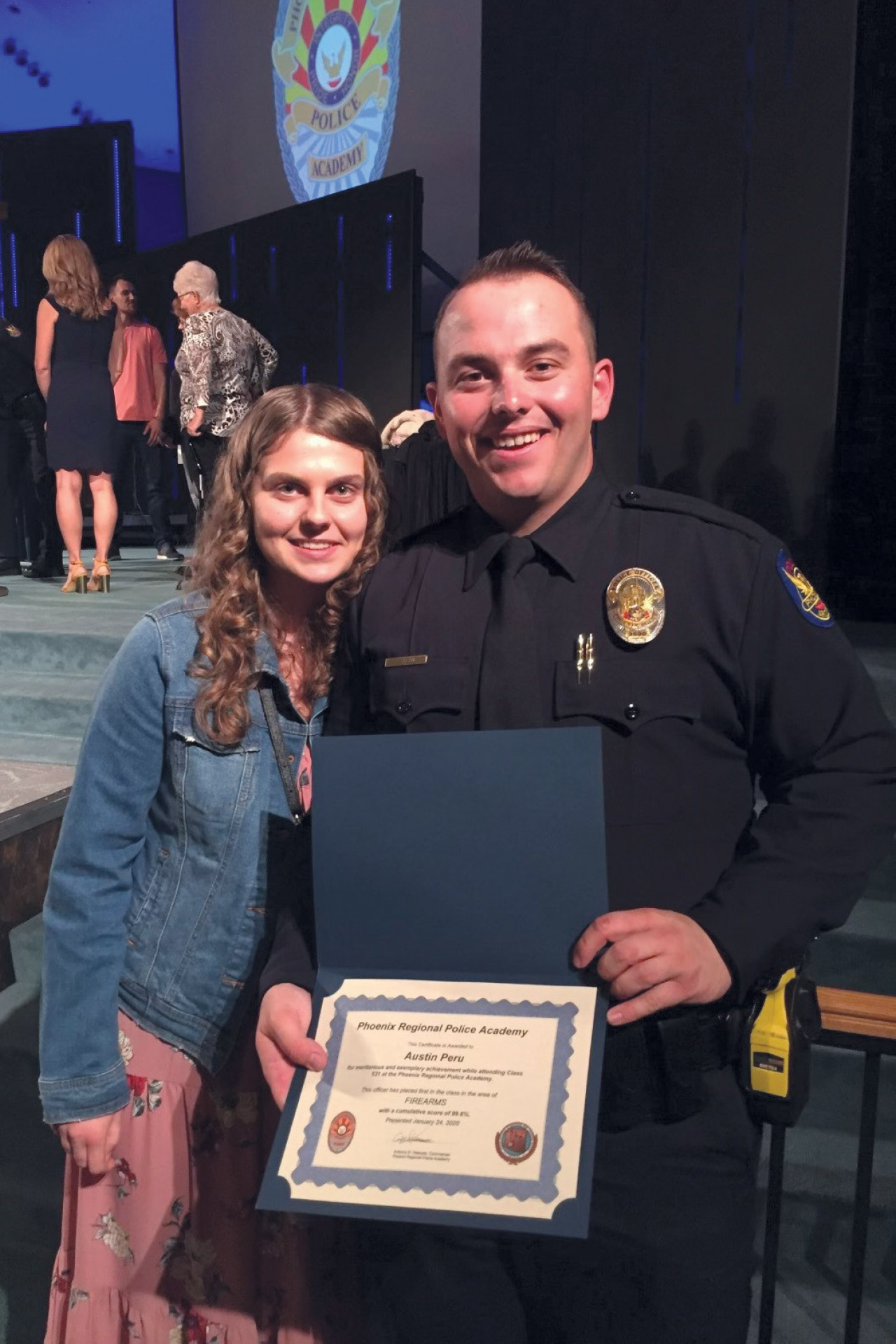
Austin then heard the gunshots stop from the suspect, and then he heard other gunshots from another officer. He tried his radio again, but it wasn’t working. He didn’t know what was put out on the radio from other officers. He was running down the street eastbound on Warner toward the red and blue lights arriving. He remembers telling the responding units he was shot and that Officer Jones was still at the house. They told him to get into the back seat of their police Tahoe. Blood was coming out of his chest around his vest. The adrenaline stopped, and he recalls starting to pass out in the back seat of the police car. He woke up and had a hard time breathing. He continued to go in and out of consciousness as they drove him to the ambulance near S. 51st Ave. and W. Elwood St. Austin was then transferred to the fire department ambulance, where they started to access his injuries, cutting his clothes and removing his duty gear. They cut off everything in the back of the ambulance. They were advising him of where he was hit by gunfire. He remembers hearing, “arm, shoulder and chest.” He thought to himself, “Uh oh, this isn’t good.” He was having a hard time breathing, and they were placing chest seals on his body. They were attempting to hear lung sounds on his chest; the left side had sounds, but when they moved to the right side, they couldn’t hear anything. His right lung had collapsed due to his injuries.
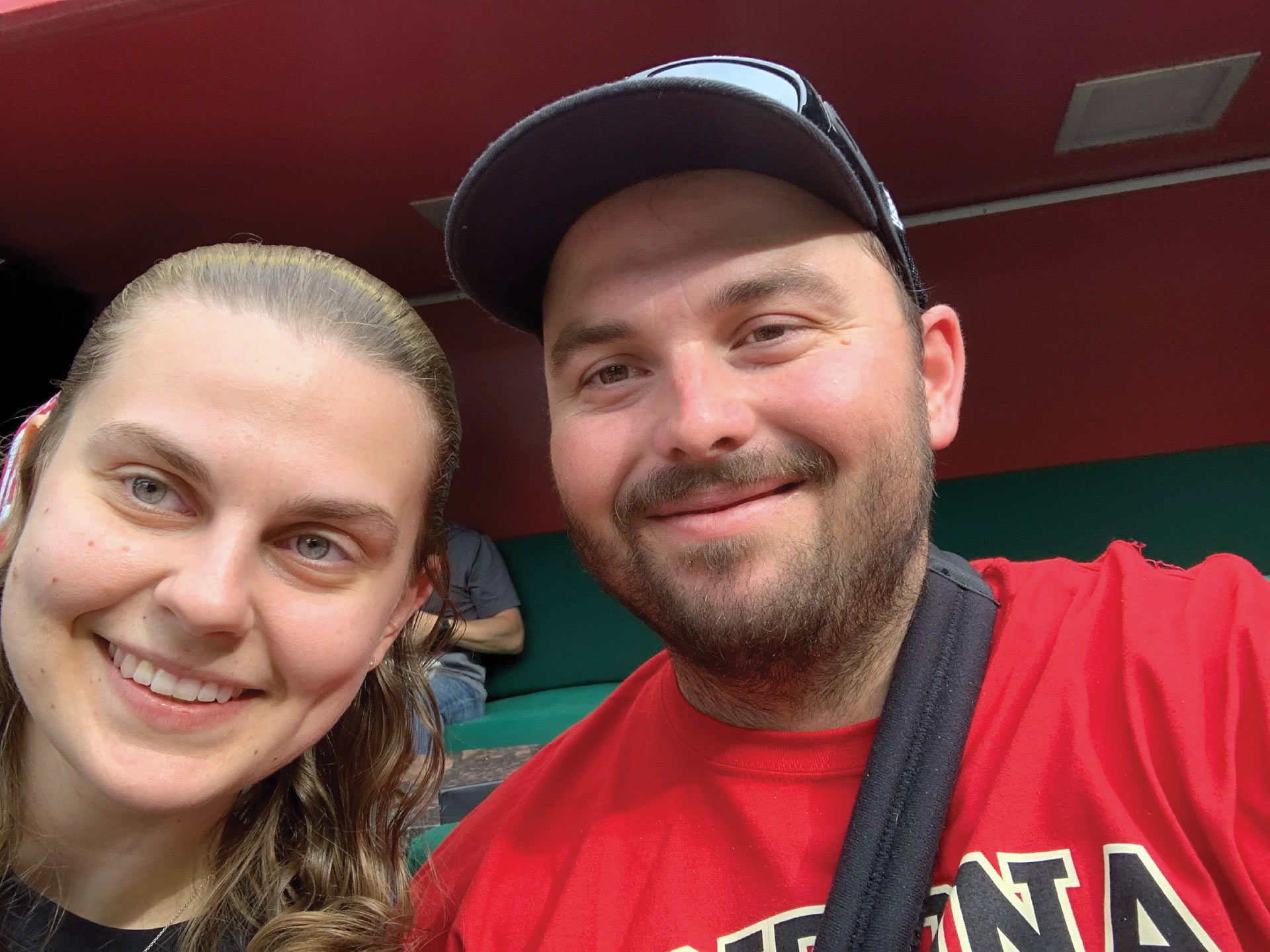

Austin kept going in and out of consciousness, and it felt really easy for him to just close his eyes and drift off where there was no pain, but he was doing everything in his power to stay awake. When they arrived at the hospital, he later learned that his left lung had also collapsed. He remembers that when he was brought into the emergency department (ED) of the hospital, he had a harsh dose of reality because he was the one being worked on, rather than him arriving to check on a patient. While lying on the bed, he saw a big bright light above him and a bunch of heads and faces surrounding the light. He still couldn’t breathe as the doctor started to insert a chest tube. Austin then said, “I don’t remember anything else, I passed out.”
Austin later woke up in a hospital room with his family surrounding him. It was in this moment that he was so thankful to be alive. He was shot five times in total. He was shot in his right forearm through and through; right upper arm, which shattered the humerus bone; right upper chest front, which exited his back, fracturing his shoulder blade; right lateral area through and through; and left hand through and through. The most severe injury was to his humerus bone, which needed immediate surgery. The doctors had to cauterize the injuries to stop the bleeding.
Austin says that his right arm bone is still healing and that his arm is able to function. There is still nerve damage, which is consistent with his injuries, that affects his hand function. Doctors placed a metal plate and 15 screws to reconstruct the bone in his right arm. The other injuries have healed, but there is still some sensitivity around the injury sites. The first month or so was difficult because he could not get sleep due to pain. He has returned to work on light-duty status, with a lot of doctor’s appointments. He is still recovering physically and mentally from the trauma of that day. I asked Austin how he feels now, and he said, “I am so thankful for my family for being there and my fiancée, Brooke.” He is looking forward to getting back into hunting, fishing and playing golf again. He wanted to thank his friends who have always been around when he needed them. He wants to tell his story and let the newer officers know: “Don’t give up, and refuse to lose. You need to bounce back from stuff like this.” Austin has completed detective school, general instructor school and is looking toward the future of possibly being an instructor at the Academy or even the Employee Assistance Unit (EAU) to help his fellow officers. “Considering the circumstances, I feel very lucky,” he says.
Austin and Brooke just purchased a new home and are now engaged to be married in May 2023.
Brooke’s Story
I asked Brooke about that day, and she said that she was at home sleeping. Around 5 a.m., she heard a knock at the door. It was a Phoenix police officer. She thought that was weird because they don’t live in Phoenix. He asked for Brooke and wouldn’t tell anyone what was going on. She initially thought that her house was being robbed, but when she saw the officer, her heart just dropped to the floor. He told her that Austin had been shot and that he was going to take her to the hospital; he didn’t know what condition Austin was in. She threw on clothes and got into his police car. The ride took forever because they lived in the Northwest Valley. She asked how long it would take. He told her about 18 minutes.
They arrived at the hospital, and there were Phoenix police officers all over the place. She was escorted into the waiting area. The doctors said that Austin was in surgery to stop the bleeding. She was shocked, and it felt like she was in a weird dream with a lot of waiting. Austin made it out of surgery and was taken to the ICU. The hospital was only allowing two people to see him at a time. His parents went up first. She was finally able to see Austin, and he was unconscious and intubated. She remembers seeing that he was wounded and bruised.
All she could do was hold his hand. “I was scared to touch him,” she says. She stayed with him every night in the hospital. She was scared that they wouldn’t have the opportunity to grow old together. The hospital eventually allowed more visitors at one time. Austin’s breathing tube was later removed as he began to wake up. She was always praying for Austin, and she knew that he was going to be OK. She knew in her heart that they would still get more time together for the future. She was thankful that she was allowed to stay by his side with all the COVID protocols in place at the hospital.
Brooke is so excited to be getting married to the man she loves after being together since they were 19 years old. They met at Glendale Community College, and she looks forward to their lives together.
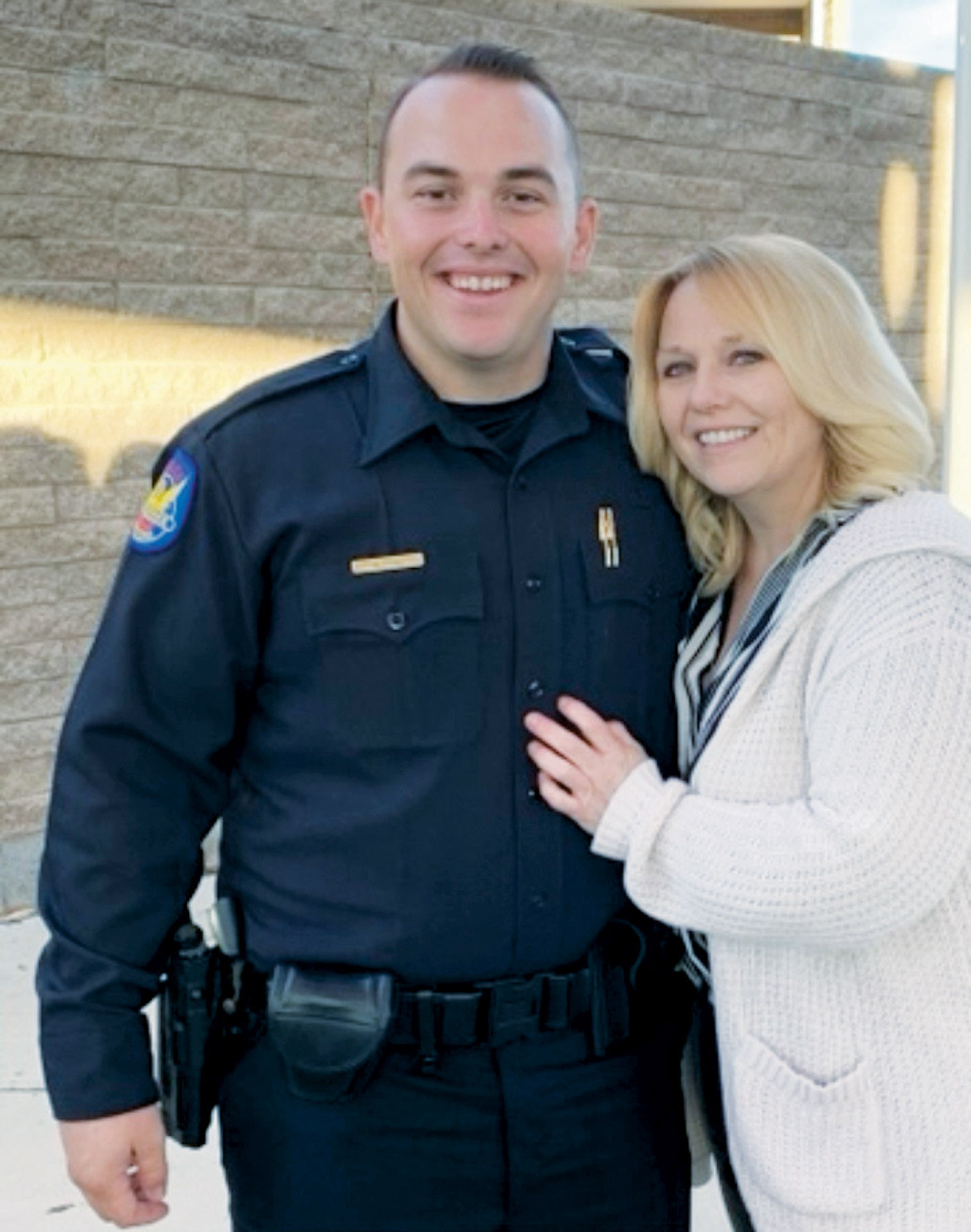
“A Parent’s Worst Nightmare”
Austin’s mother, Melinda, remembers her phone ringing at around 3:16 a.m., and they told her something happened to Austin at work. She was also told that they were sending a car. She knew that was a bad sign. She asked, “Is Austin still with us?”, but they did not have any information. She got ready and woke up her boyfriend. They waited outside for the police car to arrive. She called Austin’s father, Rudy, and his brothers, AJ and Andrew, to tell them the news (AJ was the only sibling who answered). She tried calling Brooke multiple times and left a voicemail (to this day, Brooke has not listened to that message). The police car arrived, and the ride felt like it took forever. All she could think about was whether her son was
dead or alive.
They arrived at the hospital, and a fire captain told her about Austin’s condition and that he was being prepped for surgery. She waited for Rudy to arrive, and they went into the ED to see Austin. He was white as a ghost and cold to the touch. She said that it was something that she never wanted to be a part of. They were escorted to a waiting room. This is a parent’s worst nightmare. Austin later woke up in the ICU, and she remembers being there in the hospital with him. Austin told them the story of what he remembers happening, and she could tell at that moment, “Our Austin is coming back.” She is very grateful to have her son still. She said it is so hard to watch him struggling still today, and it breaks her heart as a parent. “We have to focus on that he is here and moving forward,” she says. She wanted to say thank-you to Officer Jason Hobel for helping them through this incident, and that he is amazing. “I don’t want anyone to go through this.”
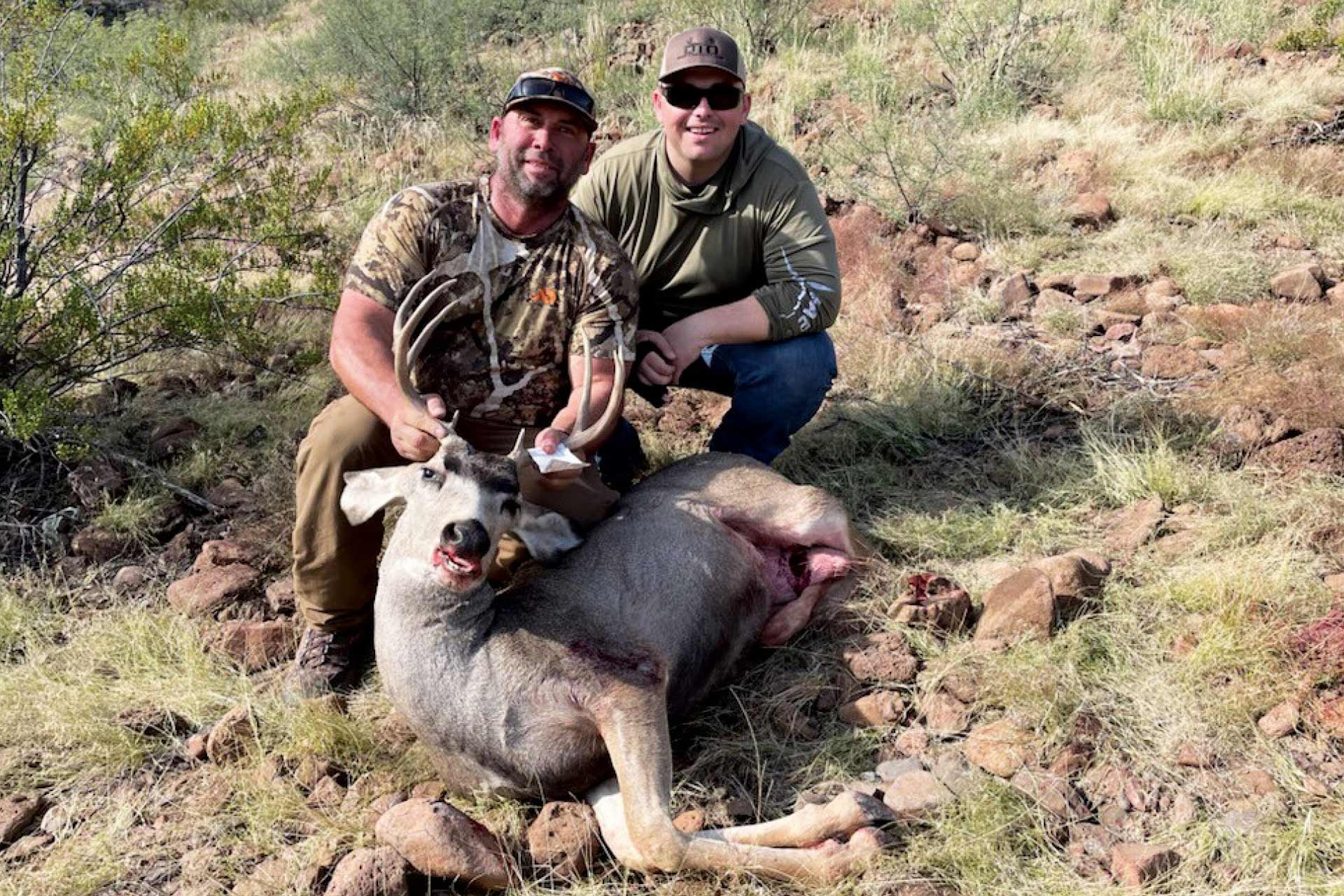
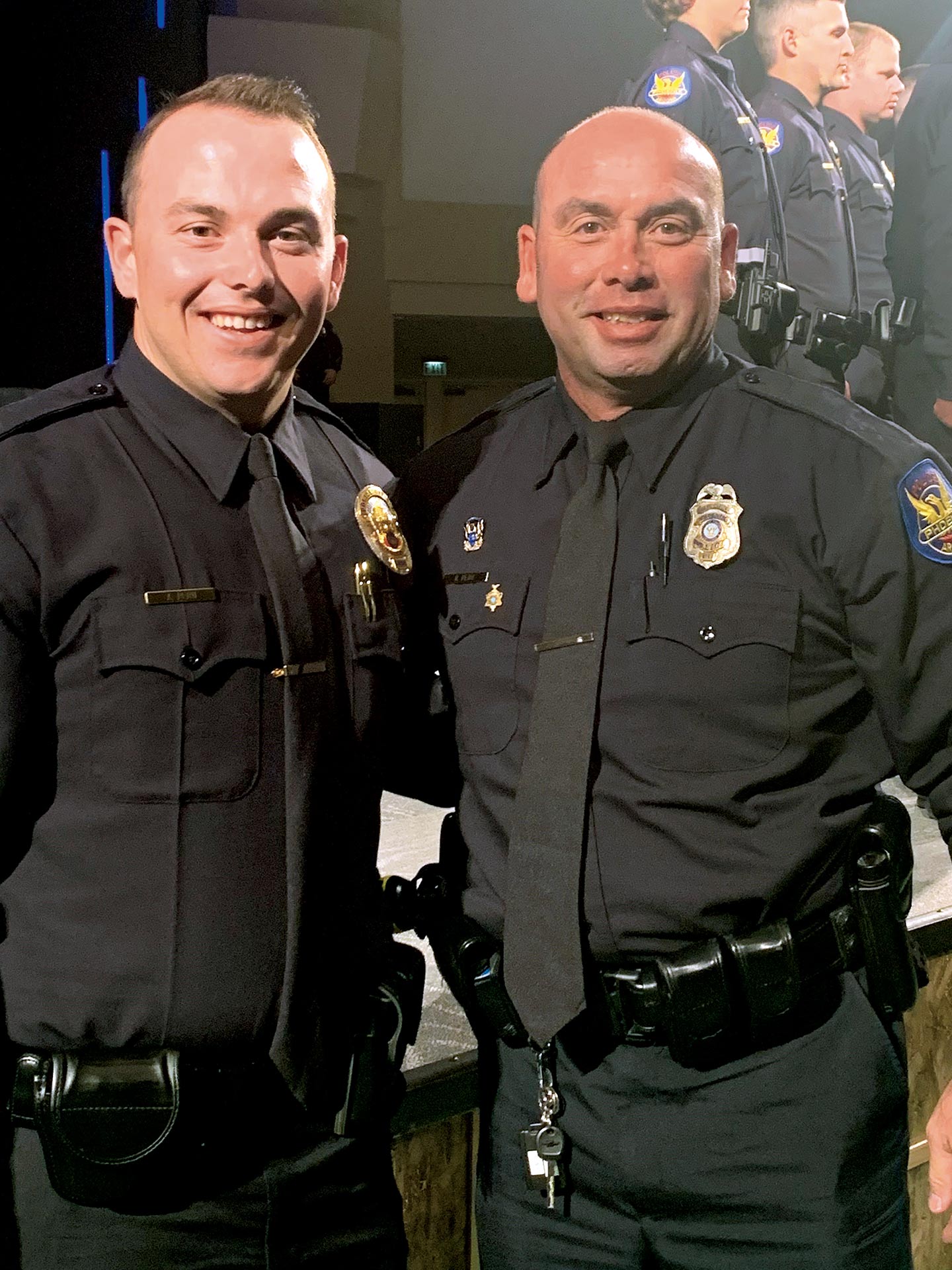
“Why Couldn’t It Be Me?”
Austin’s father, Rudy Peru, is also on the Phoenix Police Department. Rudy told me about that morning. His cellphone dinged and one of his friends texted him that we just had a 999 (Officer Down) in 83, and he tried calling Austin. He also turned on his police radio to listen. Austin didn’t answer and it went to voicemail. He called again and someone answered, and he heard breathing on the other end of the line, and then nothing for 48 seconds. He called another officer to see if he had heard anything about Austin, and he said no. The other officer who was on duty said that the scene was still active. Rudy started to text Austin, worried that he was involved. Rudy woke up his wife and thought that they had heard Austin’s voice clear on the radio. They then heard that more officers had been shot. A short time later, Rudy’s lieutenant called him and said, “Rudy, did you hear?” Rudy said that he started yelling and screaming, “Is my kid alive?!”, because the lieutenant wouldn’t give him an update. Eventually, the lieutenant said that Austin was OK for now. Rudy said that he couldn’t contain himself and was very upset. It wasn’t very long before a police car arrived to give Rudy and his wife a ride to the hospital. “I just remember being pissed off, crying and having so many emotions coming over me,” he says. He thought that this could be the last time he would see his kid again. “Melinda got a hold of me and gave an update that Austin was in critical condition, but stable. That was huge relief to hear,” he recalls. They arrived at the hospital and saw all the police vehicles parked outside, and they went into the ED to see Austin. He said, “This was the worst day of my life.” So many things were going through his mind: “Why couldn’t it be me? He has his whole life ahead of him. I just wanted to protect my kid, and couldn’t do it. I was so emotional.” He didn’t know if he would ever be able to talk to him again after giving him a kiss on the forehead. Rudy’s whole work bureau arrived at the hospital, and to have the support of his bureau made him feel good. The whole time Austin was in the hospital, the Airport Bureau officers stood guard. Austin got out of surgery, and when he was in the ICU, Rudy was able to see him again. “I just wanted him to wake up and to talk to him.” His heart dropped when he saw all the tubes, IVs and wounds all over his body, and he felt helpless. “I remembered just a week before I was able to work with Austin on a supplement shift for the first time. I got to see how much of man he had become.” He said he could see himself in him, “with being a police officer and exhibiting my confidence.” When Austin finally woke up and opened his eyes, Rudy remembers him saying that he was OK. Rudy was so excited, and he gave him a hug and kiss.
On February 15, 2022, Austin was discharged from Good Samaritan Hospital, and Rudy was able to drive him home. On the way out of the hospital, he was greeted by his squad mates and close personal friends. “It was great to see the comradery of everyone coming over the house to show their support for Austin,” Rudy says. “I know he has his whole life ahead of him, and I am looking forward to him having grandchildren.”
By John Maxwell
On December 8, PLEA Charities and the Arizona Probation Officers Association (AZPOA) hosted the 12th annual Shop With a Cop at Kohl’s in north Phoenix. This year, PLEA Charities graciously received a grant from the West Valley Mavericks Foundation that fully funded the event. Thanks to the Mavericks’ support, we were able to provide a memorable holiday experience for 180 young people ages 7–12 — our biggest event yet. This grant was critical to the success of the event, and we look forward to continuing our relationship with the Mavericks, a premier foundation in the West Valley.
Participating officers were assigned a child and they picked them up in a fully marked Phoenix Police Department vehicle, chauffeuring them to Kohl’s. After checking in, everyone enjoyed breakfast burritos, freshly baked doughnuts, fresh fruit and hot chocolate. The children also completed small crafts to take home after the event, and were given goodie bags with gift cards donated by Domino’s and winter gloves and hats donated by Target. After breakfast, children watched the arrival of Blue Santa, courtesy of the Phoenix Police Department Air Unit, and a Phoenix Police K-9 Unit demonstration.
Inside the store, the children had the opportunity to take a photo with Blue Santa and tell him what they wanted for Christmas.
Then the shopping began. Each child submitted a wish list of items, and officers were paired with children to help them shop for gifts. They were allowed to spend $175 per child, and in some cases our officers used their own money to cover the spending that was over the allotted amount.

After the shopping was finished, the officers and children went outside to wrap gifts under tents provided by Arizona Bounce Around, and everyone was kept warm by the patio heaters provided by Home Depot. Children were also able to enjoy exhibits that were staged in the parking lot by the tents. The Special Assignments Unit (SAU) displayed its BearCat tactical vehicle, and Duncan and Sons Lines brought two semi-trucks. The kids had a blast climbing into the trucks and blowing their air horns.
Once the kids were done wrapping gifts, the officers transported the children back home to deliver the gifts to their families.
This was the largest Shop With a Cop event that PLEA Charities has hosted, and the largest such event in the state of Arizona! We understand the struggles that these children and their families are going through, and we wanted to expand our limit from 150 children to 180. We are so proud of our officers who have returned every year to participate because they believe in what their time means to the youth. We want to thank all the sponsors, donors and volunteers. We also want to thank all the police officers and probation officers who helped with this event.
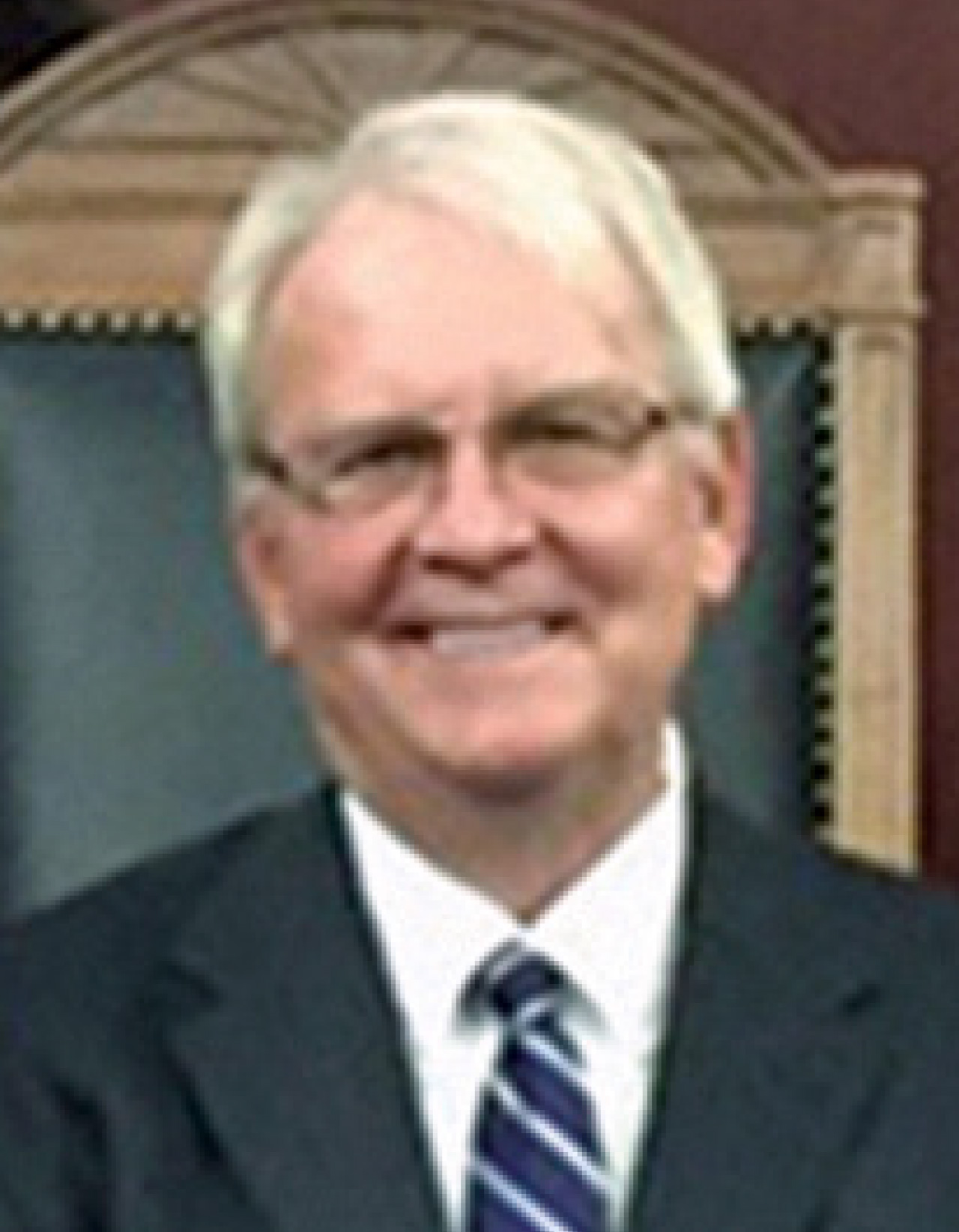 By Mike Napier
By Mike Napier
Attorney, Napier, Baillie, Wilson, Bacon
& Tallone, P.C.
The Phoenix Police Department is short on personnel. There are not enough officers. We can debate the cause and hear cross opinions, but the fact remains — officers are leaving the ranks. In the last four years, the number of officers has declined from approximately 2,859 in 2018 to approximately 2,583 by the end of 2022. This is not because the City of Phoenix actually defunded the police by cutting the police budget. Yet the clamor for defunding in some quarters has become one ingredient that has served to drain the respect, in large measure, out of the public’s perception of the job.
The fact is that the occupation is now considered by those who would suit up in the uniform as less attractive than other occupations. Officers have opted out and others are not forming recruit lines. It is a job in which you are more likely to be injured, commonly can’t bring the perpetrator to civil justice due to the Fireman’s Rule (which bars financial accountability), can not only get fired, but also go to jail for a split-second decision, and a job where once you were as good as the next good cop, now you are no better than the bad cop whose conduct rightfully disqualified him for the job. As PLEA President Darrell Kriplean has reminded us, it is with the broadest of brushes that you are painted. Like a Motherwell painting.
In this way, events in the past few years have altered the public’s perception of police officers, yet the degree of difficulty, amid the egregious acts of a few, in performing the job has only increased, as have the populations officers protect. Still, in many communities, officers, ill-equipped and not fully prepared, are expected to take the lead role in dealing with the mentally ill. Performance scrutiny has increased, as have the number of prosecutorial investigations.
How to Get the Officers Back — Restore Trust
To fix this, do not lower standards for qualifications to find recruits. That will, for obvious reasons, only perpetuate the problem of misconduct. Train your officers better than ever and don’t expect them to cope with the mentally ill for whom they have not been trained to the same level as a professional in the field. From the top down, in every respect, show and encourage respect for the vast majority of officers who deserve it. To the City leaders: Set the example for the community in your appreciation for all that the officers do for the community. This is a start to refind the acceptable level of police service and protection for the community.
The City has already embarked on another course to enhance the quality of police service — increase pay so that working as an officer in Phoenix will command pay that is no less than anywhere else. Were the remedy that easy, higher pay would be the sole answer. It is not. Another essential #10793 part of restoring police work so the City can find as many qualified officers as it needs is, during this shortage, to persevere, despite the conditions, in the hard work of the job. As officers have left in droves, the ones who have remained without the personnel support that they require for optimum safety try to be everywhere they are needed as fast as they are needed. And PLEA has supported the City through this crisis while staying the course on behalf of its members with its dedication to the communities’ charitable needs.
To stop the attrition and find qualified recruits, to relocate that respect, do not break promises, even if you are told you can, do not impose on police officers the crushing load of substantial attorneys’ fees awards, do not threaten to engage in unconstitutional searches and do not overload on the scrutiny of the officers’ work.
In this regard, the officers are mindful that the City has placed civilian review of aspects of the disciplinary process on top of the longstanding civilian review of discipline that already exists in Phoenix. In short, Phoenix, with civilians on the Disciplinary Review Board, with five civilians appointed by the mayor on the Phoenix Civil Service Board, a board with investigatory powers and with a civilian hearing officer adjudicating the appeal, already has a process that, once the discipline is administered, and even before, belongs to the community.
Presently, the people of Phoenix know that for the majority of calls, a wait is required. The City can eliminate that wait, but only if we get started now.

President
dkriplean@azplea.com
This has been quite a year for our Department, to say the least. We have been faced with a lot of adversity. I will try to put the past year or so into context.
As I am sure no one has forgotten, the DOJ pattern and practice investigation is still ongoing. Rumors are aplenty regarding this issue, and I’m not sure anyone really knows where they are on that, as they don’t seem to be very forthcoming with information. What I can say is to keep doing your job the way you always have, professionally and honorably.
In these past 12 or so months, we have seen unprecedented violent attacks on Phoenix police officers.
Month after month, more and more of our brothers and sisters make the decision to retire and move on. Achieving the finish line sometimes seems like a lofty goal. Congratulations to those who get there. What is interesting and sends a message, not only to Department management but also to City management, is that a lot of folks are making the decision to retire before entering or completing DROP, leaving in some instances hundreds of thousands of dollars on the table. The last figure I heard was that Phoenix police officers are averaging two and a half years of DROP before pulling the plug. In addition, we have folks resigning and either lateralling to other police departments or leaving the profession altogether. The conversation always seems to revolve around recruitment, but when you have 20-plus-year officers and detectives leaving, that institutional knowledge and experience is lost forever. Some reflection by those at the highest levels of the City and Department management needs to happen immediately to prevent the ongoing exodus of senior officers.
In these past 12 or so months, we have seen unprecedented violent attacks on Phoenix police officers. At no time in my 28-year career have I witnessed anything like it. To date, nine officers/detectives have been shot and another nine injured by shrapnel during the same incidents where our people were shot. Thanks to the grace of God and the outstanding reactions by these officers, we have not had anyone killed. In each of those incidents, our officers displayed an unwavering commitment and extreme courage while attempting to protect innocent citizens.
Nationwide, the attacks on police continue to grow. Ambush attacks seem to be the flavor of the day for the cowardly criminals. We need to be aware of everyone and everything as we go about our daily work. Take nothing for granted.
We have a new Chief who has come to us from Baltimore. I have met with Chief Sullivan several times, and each time my respect for him has grown. I did not like the exclusionary process that brought him here, but I do believe he will guide this ship, hopefully, back to the glory our Department once enjoyed. For those of you who have not yet met him, he is not pretentious or egotistical. What you see is what you get. The FOP president back in Baltimore all but told me the same thing before he started with us. I am hopeful that his leadership will be nothing but beneficial for us.
As this year ends, I am looking forward to 2023. While we are bound to encounter some rough patches, I am confident the proud members of the Phoenix Police Department will continue to be the example for the rest of the nation. From acts of heroism we have yet to see to the everyday examples of compassion provided to our citizens in need, the courageous men and women who serve this community are dedicated professionals who seek out some of the most evil people in the world to put them in prison where they belong.
Remember — take care of each other, don’t advise, and if you have any questions, I can be reached at the PLEA office or at dkriplean@azplea.com.
